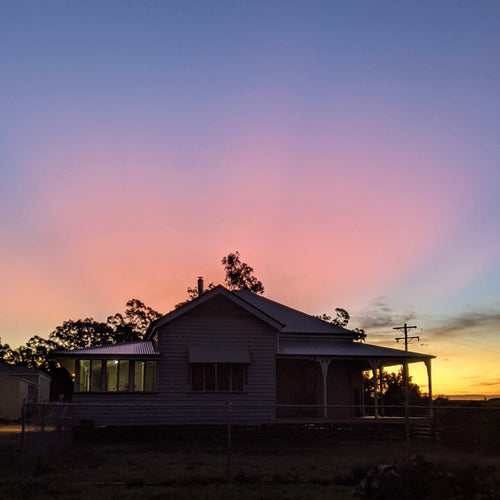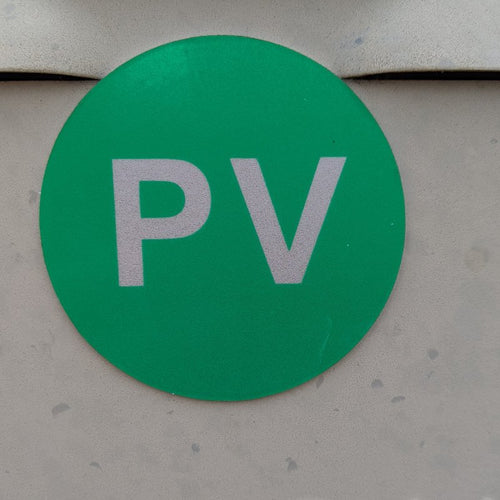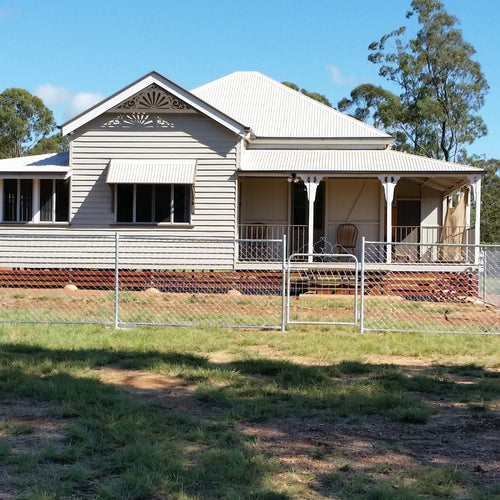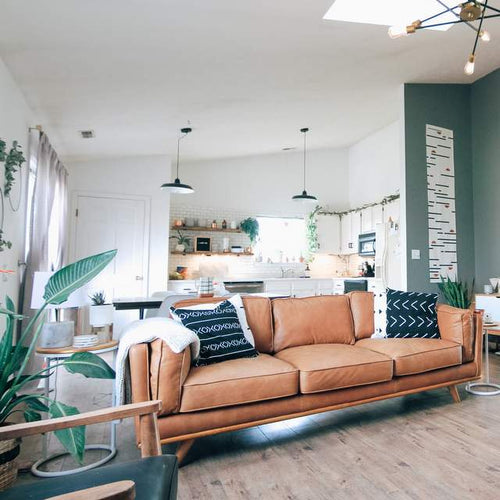The air-conditioning dilemma
| you know what an air-conditioner looks like..... |
Our house at Eight Acres came with an older style ducted reverse cycle split system air conditioner installed in the lounge. On very hot days, we would turn it on and lie on the couch to try to cool down, but the cold air never quite made it to the bedroom at the other end of the house. On the first day of the heat waves we had in December 2013, the air conditioner stopped working. Although Pete tried his best to fix it, he admitted defeat and set up an old “window rattler” system that we had used in the previous house. It was loud, but effective, so we lived with it for nearly a year.
Late last year, we decided to install a new air conditioner in our bedroom. I was still not totally comfortable with the idea of using air conditioning, but I told myself that this is a house that we intend to sell, so we won’t be using it forever. Since it has been installed (and Pete got the lounge one fixed at the same time), and we still had all three air conditioners set-up, we used our energy meter to get an idea of their energy use. I was very surprised to see that the new air conditioner used far less energy (it worked out to be about 10c/hr, compared to 50c/hr for the lounge one and $1/hr for the window one, the lounge one is about twice the size, but uses 5 times the electricity). Apparently this is because the new system includes an inverter, which better matches the machine's energy consumption to the activity in the room. It is good to know that at least the technology is improving.
I recently read an article in Grass Roots that said new houses, even the ones with good energy star ratings, are really just insulated boxes designed to keep hot air in (winter) or cold air in (summer), but not really designed to take advantage of passive solar opportunities. And this makes sense from my own observations. This made me feel a little better about using air conditioning. Our house is pretty cheaply built, but it is insulated and well-sealed, it was designed to be air conditioned, and not naturally cooled. When we run the air conditioner we do our best to keep the cold air in the room, using an old mattress protector as a second curtain, and keeping the door closed.
| .... so here's two hot dogs instead. |
At our secondhand house at Cheslyn Rise we made a huge effort to set up the house to be naturally cool. Firstly we orientated the house to have verandas facing north and most of the windows facing south. We are lucky to have great air flow, with plenty of windows, breeze ways, high ceilings, fans and a windy hill-top position. Finally we tried to prevent heat entering the house by choosing a light roof colour and insulating the ceiling cavity, we also have curtains on the main windows in the bedrooms and lounge. So far we have found this house to be perfectly comfortable on even the hottest days. We are going to try to avoid installing air conditioning if the inside temperature remains cool enough.
Although its nice to think that an older house, built before air conditioning, is better suited to our climate, in its original position it would have been relatively hot, as we spun it around 90 degrees when we moved it to our property. One of the verandas is built in and mostly windows, previously it would have had full afternoon sun heating up that room, but now that is on the south side and very cool. If old houses have been renovated without consideration for passive solar, they may not be ideal either. If you live in a hot house, don’t feel bad for using air conditioning! There are a few things you can do to make your house more comfortable, but at the same time, its difficult to overcome the original design.
- Improve curtains and sealing of rooms to be air conditioned
- Keep doors closed and only cool small areas at a time
- Install shading (trees or awnings) outside the windows to reduce heat coming into the house
- Improve insulation in ceiling and walls
- Install ceiling fans to improve circulation of air
- Change roof colour to as light as possible (can be painted if roof is in good condition)
- Add ceiling space ventilation to remove hot air
- Move windows and doors around to improve airflow or change how rooms are used to make use of cooler rooms for sleeping
A secondhand house for Cheslen Rise
A tour of our secondhand house (BEFORE)
The story of our secondhand house - Part 1
Choosing insulation for our house
Renovating a Queenslander house
Building the Queenslander house - book review
Stairs for our secondhand house
Removing asbestos from our secondhand house
Another update on our house progress
How to choose exterior paint colours
And one more update on our house progress
Keeping our house warm in winter
























Hi Liz ,Icame across a list of books you read and hada small commission their for sale .But I can not seem to find it now ?
thank you Mary Ann
Interesting post and good luck Liz.
We don’t have air con or fans either down the road and it is straight-up unbearable on those nights where it stays around 30. Our house isn’t nearly as insulated or passively cooled as yours though. Putting fans in this year as I think that air circulation will really help.
Leave a comment